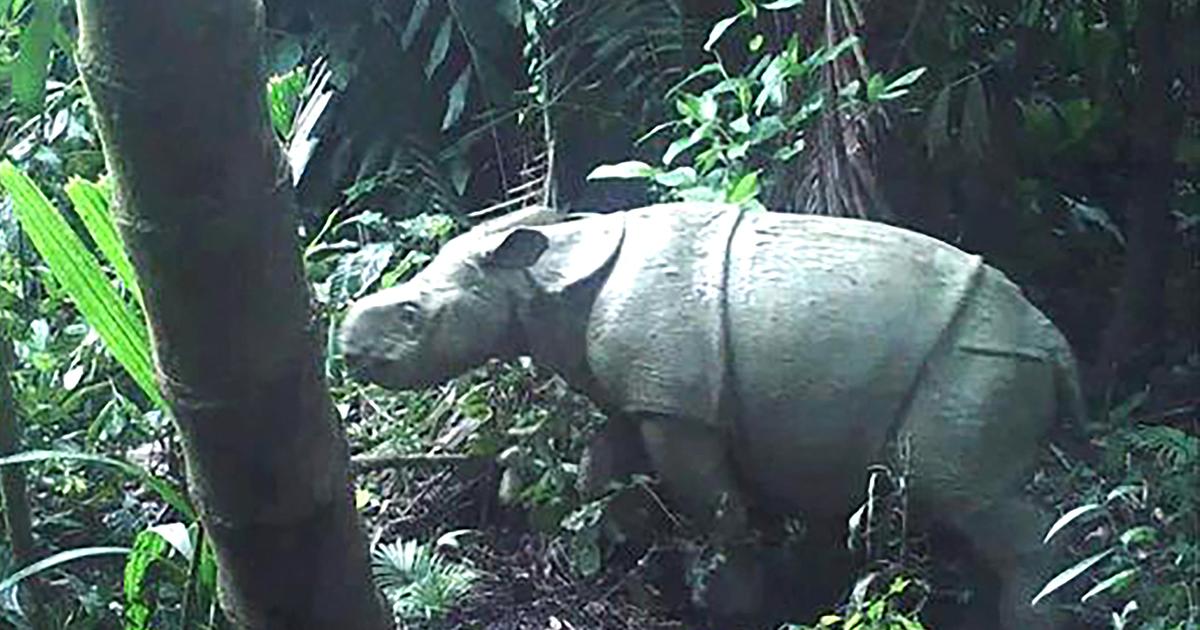Matamata turtle, requiem sharks, broad-snouted caiman… The 19th conference of the Convention on International Trade in Endangered Species of Wild Flora and Fauna (CITES) ended this Friday in Panama with the adoption of around fifty of resolutions.
Here are the main ones.
Sharks
The 183 States parties to the Convention and the European Union have decided by consensus to strictly regulate the fishing of 54 species of requiem sharks (Carcharhinidae) and hammerhead sharks (Sphynidae), victims of an international fin trade intended for to make a popular soup in Asia.
Only Japan has expressed reservations about the protection granted to the blue shark, considering that it is not threatened and that the restriction of catches will have "economic and social detrimental" consequences for its fishermen.
crystal frogs
More than 160 species of "crystal frogs" (Centrolenidae), whose transparent skin allows you to see their internal organs, have been listed by consensus in Appendix II of CITES, which imposes the regulation of their trade.
These nocturnal batrachians from the humid forests of Central and South America are endangered because of their "high demand on the pet market", according to Joaquin de la Torre, director for Latin America of the NGO IFAW .
The European Union and Canada initially called for certain species to be excluded from this protection, but then backtracked, noting that their position was largely in the minority.
turtles
Different levels of protection have been adopted for some twenty species of turtles on the American and Asian continents.
Among them are a dozen species of freshwater turtles, including the South American matamata.
This tortoise with its spectacular thorny shell, which arouses the covetousness of collectors, is now listed in Appendix II.
CITES has also listed the North American caiman turtle (Macrochelus temminckii, above) in its Appendix II, but has given up listing the snapping turtle (Chelydra serpentina).
Crocodiles
Brazil and the Philippines will now be able to export their farmed crocodiles, which go from Appendix I (total ban on trade) to Appendix II.
Likewise, export has been authorized for the skin and meat of the broad-snouted caiman (Caiman latirostris, below) from the Amazon basin, the marshes of Brazil and the rivers and wetlands of neighboring countries.
“The populations of these animals are very large because they have reproduced very well,” according to researcher Miryam Venegas-Anaya, a crocodile specialist from the University of Panama.
Read alsoUkraine, Gaza, Afghanistan… Animals are also victims of war
Trade has also been eased for the saltwater crocodile Crocodylus porosus from the Philippines.
On the other hand, the Siamese crocodile (Crocodylus siamensis) will continue to benefit from the protection of Appendix I despite Thailand's request.
Elephant ivory and rhinoceros
CITES has rejected the request of several African countries to allow the resumption, even controlled, of the trade in elephant ivory.
"Any legal trade in ivory provides an opportunity for criminals to launder the market for poached elephant ivory," said Matthew Collis, IFAW's assistant vice president.
Similarly, the conference refused by 85 votes to 15, and 26 abstentions, to allow the regulated trade in white rhinoceros horn (Ceratotherium simum simum), as demanded by Botswana, Namibia and Eswatini (formerly Swaziland). , who argued that the legal sale would allow them to finance the fight against the poaching of these pachyderms.


/cloudfront-eu-central-1.images.arcpublishing.com/prisa/BCB6MJLFNJFHTOKKFRCSCPHTFQ.jpg)





/cloudfront-eu-central-1.images.arcpublishing.com/prisa/KMEYMJKESBAZBE4MRBAM4TGHIQ.jpg)


